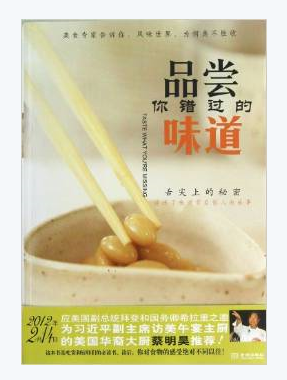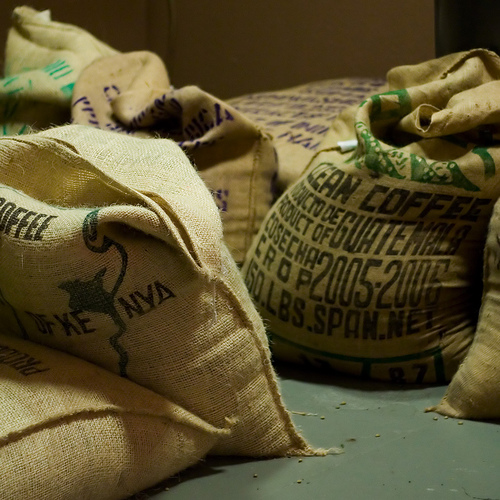Coffee book introduction: taste the taste you missed

Chinese title: taste the taste you missed
English original name: Taste what you're missing
Also known as Taste:Surprising Stories and Science about Why Food Tastes Good
Author: Barb. Starkey Barb Stuckey
Translator: Xia Yu
Press: Jincheng
Book classification: the principle of food evaluation, non-professional popular science articles, more like the experience sharing articles enjoyed by the author.
Suitable for: have a basic understanding of coffee product evaluation, be interested in some scientific common sense behind sensory experience
Tip: pure text, more than 200,000, less picture, no color page. Some readers give book reviews that are "boring" and "need professional knowledge".
When I tasted several groups of tortilla recipes with my colleagues for the first time, they gave a detailed description of the taste, and the ways and words that described the taste made the author feel incredible and frustrated, and couldn't help thinking, is there something wrong with your mouth? Why can't you feel the difference in the mouth of those colleagues?
Such a plot, deja vu, replace the above "tortilla" with "coffee", and then think about the scene of your first contact with coffee review.
The title of the English reprint gives a clearer summary of the content. The whole book is about how the human body feels the taste and the specific expression of the taste. Browsing the book catalogue can clearly see the logical context of the article, simple and clear.
The first part explains the grasp of taste in different sensory systems of the human body, including taste, smell, touch, vision, hearing, and the way professionals taste taste.
The second part focuses on the traditional sense of "taste", starting with the five basic tastes of "salty", "bitter", "sweet", "sour" and "fresh".
In addition, another important perceptual system, taste, is described, on the basis of which the composition of delicious food is explained.
Although the whole text, the author's description is actually very interesting, as the author himself said, although "I" would like to know the scientific principle of human perception of taste, but "I" is not very interested in pure scientific discourse. although it will refer to the research and development achievements of many scientific research institutions, it is more limited to selecting content that is easy for ordinary people to interpret.
The average reader and the author think the same way, want to know some principles, but reject serious professional scientific papers, think about those technical terms, not everyone is patient enough to digest.
The whole book introduces all kinds of knowledge about "tasting" accumulated during the author's career in a nearly chatting tone. If you have some food tasting experience, the reading experience will be great, otherwise, it can only be as boring and verbose as some readers have commented.
There are a lot of words, which explain the basic principles of taste, but there are no complicated technical terms. If you have enough curiosity and patience for taste evaluation, you can open the book.

Source: Qingdao Xiumen Coffee blog
Important Notice :
前街咖啡 FrontStreet Coffee has moved to new addredd:
FrontStreet Coffee Address: 315,Donghua East Road,GuangZhou
Tel:020 38364473
- Prev

Detailed explanation of coffee raw bean label interpretation of common acronyms
Pay attention to raw bean information, in addition to the clear name of the country and region, the label often has a lot of acronyms inside, for the first time, I often don't know what to say: DP:Dry Process, dry EP:European Preparation, European standard. It is common in Central and South America. It means that on the basis of the classification of raw beans, in order to meet the special requirements of some European raw bean merchants.
- Next

Picture and text teaching: how to make exquisite coffee flowers at home?
First, entry level: heart shape 1. The coffee cup tilts toward the body and pours in 4. 5 milk; 2. The milk jar is aimed at the edge of the coffee cup (near the side of the body) and begins to quickly shake the milk from side to side to form a circle on the surface of the coffee. 3. After forming a circle, push the milk tank away from the body, across the circle to form a heart; 4. Bring this cup of coffee for the one you love. Second, cooked
Related
- What is the meaning of lactic acid fermentation with coffee bean treatment?
- How to judge the state of foam by sound?
- How does the latte pull out the unicorn pattern? Come to get for a little trick to improve the flower pull!
- Will flower pulling affect the taste of the latte?
- Do you know the history of coffee?
- The difference between honey treatment and sun washing what is raisin honey treatment?
- What kind of milk can a novice use to make coffee foam to keep the foam longer? The correct method and skills of milking tutorial sharing
- Why do washed coffee beans taste sour? Flavor characteristics of washed Coffee
- Introduction to the skill of how to practice the size and height of water injection around the circle of hand-brewed coffee
- How do beginners practice coffee flower drawing from scratch?

